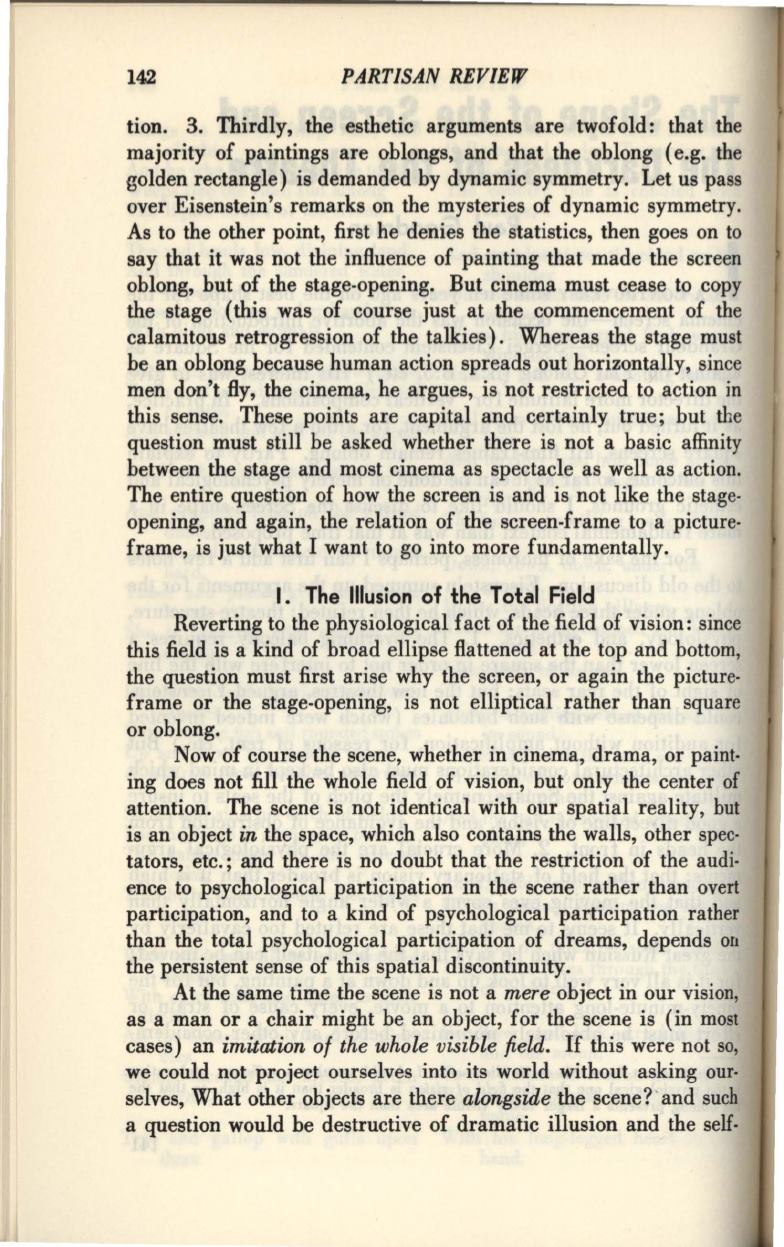
142
PARTISAN REVIEW
tion. 3. Thirdly, the esthetic arguments are twofold: that the
majority of paintings are oblongs, and that the oblong (e.g. the
golden rectangle) is demanded by dynamic symmetry. Let us pass
over Eisenstein's remarks on the mysteries of dynamic symmetry.
As to the other point, first he denies the statistics, then goes on to
say that it was not the influence of painting that made the screen
oblong, but of the stage-opening. But cinema must cease to copy
the stage (this was of course just at the commencement of the
calamitous retrogression of the talkies) . Whereas the stage must
be an oblong because human action spreads out horizontally, since
men don't fly, the cinema, he argues, is not restricted to action in
this sense. These points are capital and certainly true; but the
question must still be asked whether there is not a basic affinity
between the stage and most cinema as spectacle as well as action.
The entire question of how the screen is and is not like the stage·
opening, and again, the relation of the screen-frame to a picture–
frame, is just what I want to go into more fundamentally.
I. The Illusion of the Total Field
Reverting to the physiological fact of the field of vision: since
this field is a kind of broad ellipse flattened at the top and bottom,
the question must first arise why the screen, or again the picture–
frame or the stage-opening, is not elliptical rather than square
or oblong.
Now of course the scene, whether in cinema, drama, or paint–
ing does not fill the whole field of vision, but only the center of
attention. The scene is not identical with our spatial reality, but
is an object
in
the space, which also contains the walls, other spec–
tators, etc.; and there is no doubt that the restriction of the audi–
ence to psychological participation in the scene rather than overt
participation, and to a kind of psychological participation rather
than the total psychological participation of dreams, depends
011
the persistent sense of this spatial discontinuity.
At the same time the scene is not a
mere
object in our vision,
as a man or a chair might be an object, for the scene is (in most
cases) an
imitation of the whole visible field.
If
this were not so,
we could not project ourselves into its world without asking our–
selves, What other objects are there
alongside
the scene?" and such
a question would be destructive of dramatic illusion and the self-


